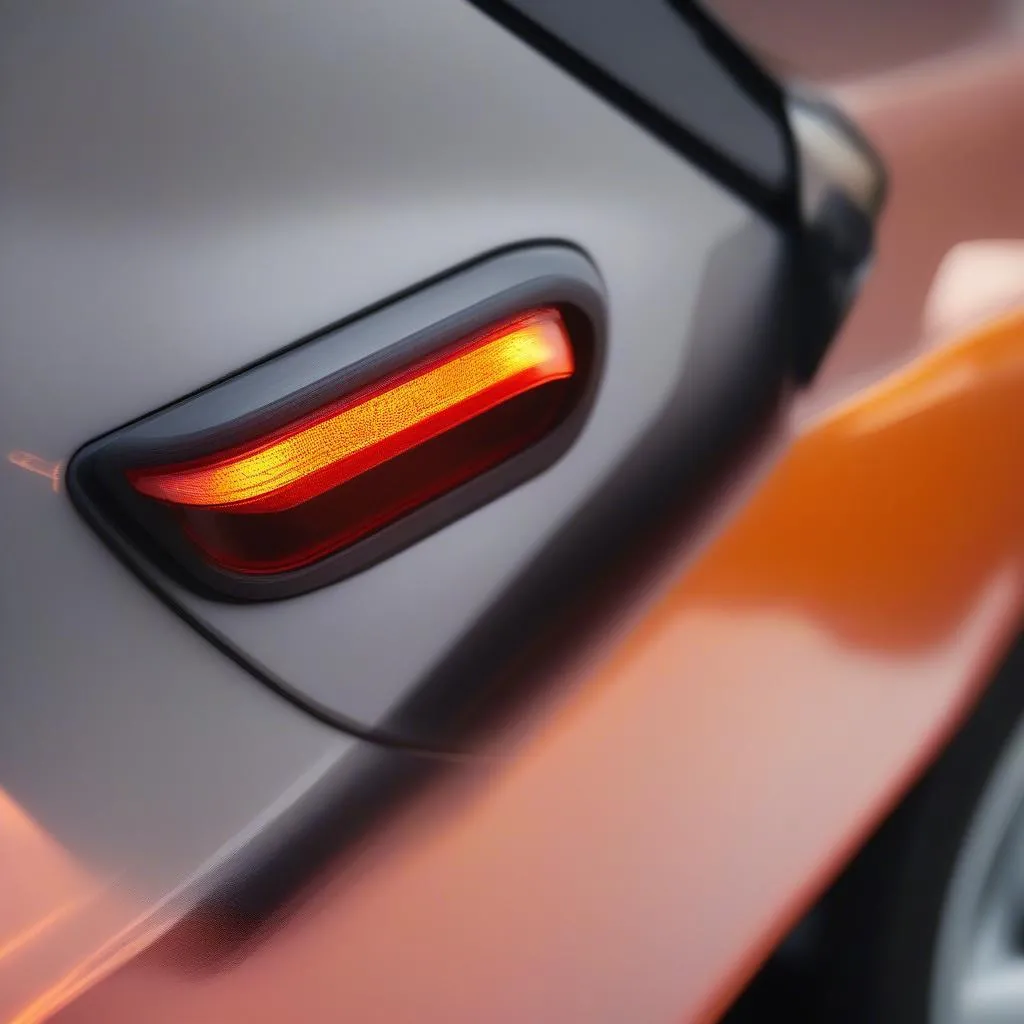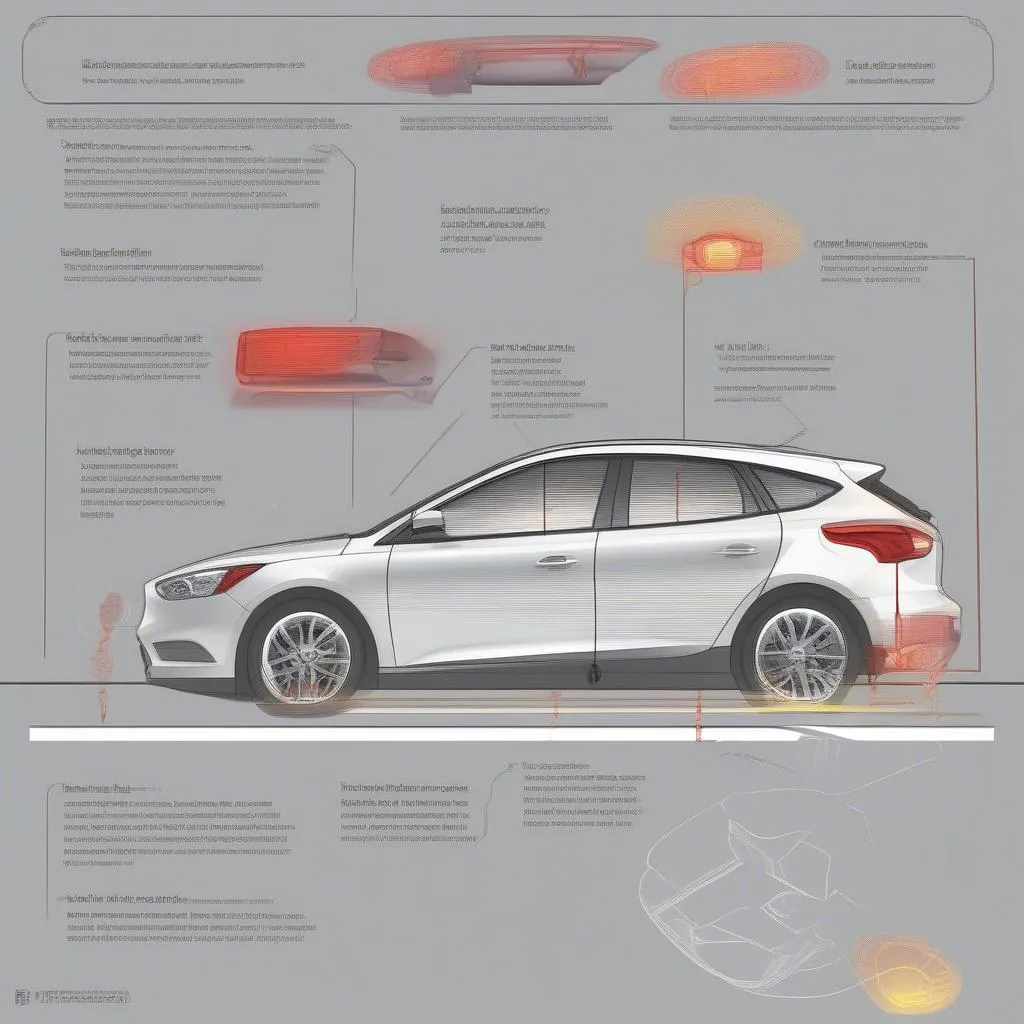Have you ever been driving at night and noticed a car with a missing or malfunctioning side marker light? It might seem like a minor issue, but these little lights play a crucial role in ensuring your safety on the road. Let’s dive into the world of Car Side Marker Lights and understand their importance.
Understanding Car Side Marker Lights
Why Are Side Marker Lights Important?
Car side marker lights, also known as sidelights, are small lights positioned on the front and rear corners of your vehicle. They are essential for signaling your presence to other drivers, especially in low-light conditions. Imagine yourself driving on a dimly lit road at night. Your car’s headlights may illuminate the road ahead, but they don’t necessarily signal your presence to oncoming vehicles or those behind you. This is where side marker lights come into play.
These lights act as a visual cue, helping other drivers to judge the size and position of your car. By clearly indicating your vehicle’s dimensions, they can help prevent accidents, particularly in situations where visibility is limited, like fog, rain, or snow.
Car Side Marker Lights: A Historical Perspective
The concept of side marker lights originated in the early days of motoring when cars were often poorly lit. As vehicle design evolved and the number of cars on the roads increased, the need for improved visibility became paramount. In the 1950s, many countries began mandating side marker lights as a safety measure.
In the US, the “Federal Motor Vehicle Safety Standard 108” was established in 1968, requiring all new vehicles to be equipped with side marker lights. This regulation played a significant role in standardizing the use of side marker lights across the country.
Side Marker Light Regulations: Varying by Country
While side marker lights are a common safety feature worldwide, regulations regarding their placement, brightness, and color can vary depending on the country.
For instance, in the United States, side marker lights are required to be amber or yellow on the front and red on the rear. In Europe, the regulations are similar but with some specific nuances.
 Car Side Marker Lights
Car Side Marker Lights
Common Issues With Side Marker Lights
Over time, side marker lights can malfunction due to several reasons, including:
- Burned-out bulbs: This is the most common cause of a malfunctioning side marker light.
- Damaged wiring: If the wiring to your side marker lights gets damaged, it can prevent the lights from working properly.
- Corrosion: The exposed bulbs and wiring can corrode, especially in areas with high humidity. This corrosion can disrupt the electrical flow and cause the lights to malfunction.
How to Replace a Car Side Marker Light
Essential Tools for the Job
Replacing a burned-out side marker light is a relatively straightforward task that can be done with a few basic tools, such as:
- A Phillips screwdriver: This is the most common type of screwdriver used for removing side marker light fixtures.
- A flathead screwdriver: This may be needed for prying off some side marker light covers.
- A new side marker light bulb: Ensure you buy the correct type of bulb for your vehicle model.
- Protective gloves: Wearing gloves can prevent cuts or scrapes while working on your car.
Step-by-Step Guide to Replacing Side Marker Lights
- Locate the faulty side marker light: Identify the light that’s not working properly.
- Remove the side marker light cover: Use a screwdriver or your fingers to carefully pry off the cover. The cover usually clips into place.
- Disconnect the bulb: The bulb may be held in place by a spring clip or a twist-and-lock mechanism. Carefully disconnect the bulb.
- Install the new bulb: Carefully insert the new bulb into the socket, making sure it’s properly seated.
- Reconnect the bulb: Reconnect the bulb to the socket.
- Replace the side marker light cover: Securely clip the cover back into place.
Troubleshooting Tips
- If the new bulb doesn’t work, check the wiring. Ensure that the wiring is connected securely and that there’s no damage or corrosion.
- Use a multimeter to test the voltage reaching the side marker light. This can help you determine if the problem is with the bulb, the wiring, or a fuse.
What to Do If You Have a Side Marker Light Issue
If you’re experiencing problems with your car’s side marker lights, it’s essential to address the issue promptly. Here’s what you can do:
- Check the bulb: Begin by inspecting the bulb. If it’s burned out, replace it.
- Inspect the wiring: If the bulb is intact, inspect the wiring for any damage or corrosion. Repair or replace any damaged wiring.
- Check the fuse: Check the fuse that controls the side marker lights. If the fuse is blown, replace it.
- Consult a mechanic: If you’re unable to resolve the problem yourself, consult a qualified mechanic.
Beyond Side Marker Lights: Additional Safety Features
Side marker lights are just one of many safety features designed to keep you safe on the road. Other important safety features include:
- Headlights: Headlights are essential for seeing the road ahead, particularly at night.
- Taillights: Taillights signal your presence to drivers behind you.
- Brake lights: Brake lights warn drivers behind you when you’re braking.
- Turn signals: Turn signals indicate your intention to turn or change lanes.
 Car Safety Features
Car Safety Features